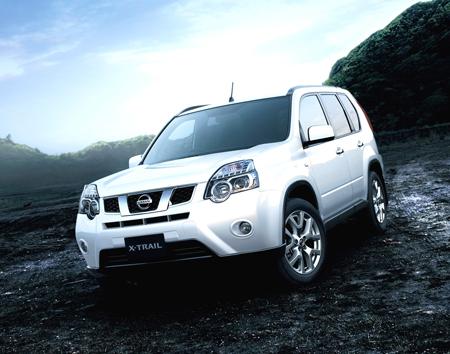|
Late this year we’ll see a facelift for of the next Nissan X-Trail. The changes refresh its exterior styling; improve the interior perceived quality and functionality, as well as revisions improve economy and CO2 emissions. The most obvious changes have been made to the front, with completely redesigned grille, sleeker headlights and bumper assembly. The lower part of the bumper is angled outwards to give a more macho look. At the rear the X-Trail's distinctive vertical lights have been updated to incorporate LED light technology for the running lights and braking, while in profile, the X-Trail's stance has been improved thanks to an increase in wheel size, with a 10-spoke 18 inch alloy wheel design which is also wider, now up to 225/55R18 in size, giving to X-Trail even more stance to the road. A 17 inch alloy wheel is fitted to some variants, a new design featured for the 2011 model. The interior has also been updated with improved materials and colour coordination. The materials used for the switch surrounds on the steering wheel, around the gear selector and on the door-mounted armrest have all been improved for better touch feeling, while thicker, soft-touch materials have been chosen for the cloth seats. Rear occupant comfort has been improved thanks to redesigned front seats, creating an additional 10mm of knee-room, without compromising on comfort for the front seat occupants. The instrument cluster is also further improved following its changes on the previous model, with bigger and clearer speed and rev counter readouts plus a new drive computer with a white-on-black display for maximum clarity. A convenient feature to complement the heated or cooled cup holders in X-Trail, is the addition of heating or cooling vents in the glove compartment. There are also rain-sensing windscreen wipers and automatic headlight control on some models.
|
All models now feature a 6-CD in-dash autochanger with MP3 CD compatibility and auxiliary input, along with an integrated Bluetooth handsfree phone system. There are steering wheel controls for audio, phone, drive computer and cruise control. Changes to the underbody aerodynamics have reduced drag co-efficient from 0.36 to 0.35 these along with other improvements in the drivetrain result in fuel economy improvements of 2 percent for the petrol variants, and almost 9 percent for the diesels. Full specification and pricing will be released closer to the New Zealand launch date, later this year. |




